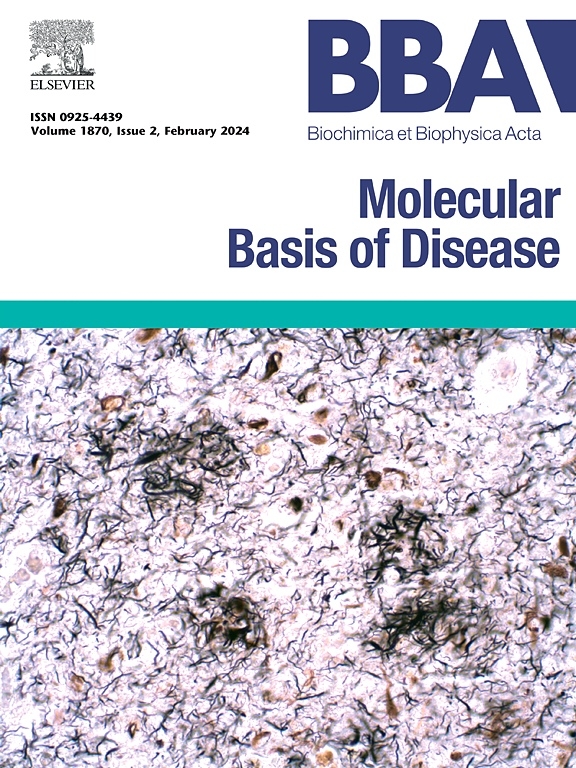Piplartine alleviates sepsis-induced acute kidney injury by inhibiting TSPO-mediated macrophage pyroptosis
IF 4.2
2区 生物学
Q2 BIOCHEMISTRY & MOLECULAR BIOLOGY
Biochimica et biophysica acta. Molecular basis of disease
Pub Date : 2025-01-23
DOI:10.1016/j.bbadis.2025.167687
引用次数: 0
Abstract
Sepsis-induced acute kidney injury (SI-AKI) is the most common organ dysfunction of sepsis, characterized with prolonged hospitalization periods and significantly elevated mortality rates. Piplartine (PLG), an alkaloid extracted from Piper longum within the Piperaceae family, has exhibited diverse pharmacological activities, including anti-inflammatory, anti-atherosclerotic, and anti-tumor effects. Herein, we investigated whether the PLG could reverse SI-AKI and explore its possible anti-inflammatory mechanisms. We constructed an SI-AKI model using cecal ligation and puncture (CLP) and systematically evaluated the protective effect of PLG administered by gavage in the SI-AKI mice. Subsequently, we performed proteomic sequencing of the kidney and integrated data from the GeneCards and SwissTargetPrediction databases to identify potential targets and mechanisms. Immunofluorescence and western blotting were used to examine the expression of relevant targets and pathways in vivo and in vitro. The influence of PLG on the predicted target and pathway was verified using an agonist of the target protein and a series of biochemical experiments. PLG exhibited significant efficacy against pathological damage, neutrophil and macrophage infiltration, and macrophage pyroptosis in kidneys at 30 mg/kg. An integrated analysis of proteomic data identified the translocator protein (TSPO) as a potential target for the renoprotective effects of PLG. Moreover, a TSPO agonist (RO5–4864) prominently reversed the protective effect of PLG in SI-AKI mice, as manifested by a deterioration in renal function, histopathological lesions and macrophage pyroptosis in the kidneys. Our results suggest that PLG may ameliorate SI-AKI, potentially through partial inhibition of the TSPO-macrophage pyroptosis pathway.
求助全文
约1分钟内获得全文
求助全文
来源期刊
CiteScore
12.30
自引率
0.00%
发文量
218
审稿时长
32 days
期刊介绍:
BBA Molecular Basis of Disease addresses the biochemistry and molecular genetics of disease processes and models of human disease. This journal covers aspects of aging, cancer, metabolic-, neurological-, and immunological-based disease. Manuscripts focused on using animal models to elucidate biochemical and mechanistic insight in each of these conditions, are particularly encouraged. Manuscripts should emphasize the underlying mechanisms of disease pathways and provide novel contributions to the understanding and/or treatment of these disorders. Highly descriptive and method development submissions may be declined without full review. The submission of uninvited reviews to BBA - Molecular Basis of Disease is strongly discouraged, and any such uninvited review should be accompanied by a coverletter outlining the compelling reasons why the review should be considered.

 求助内容:
求助内容: 应助结果提醒方式:
应助结果提醒方式:


